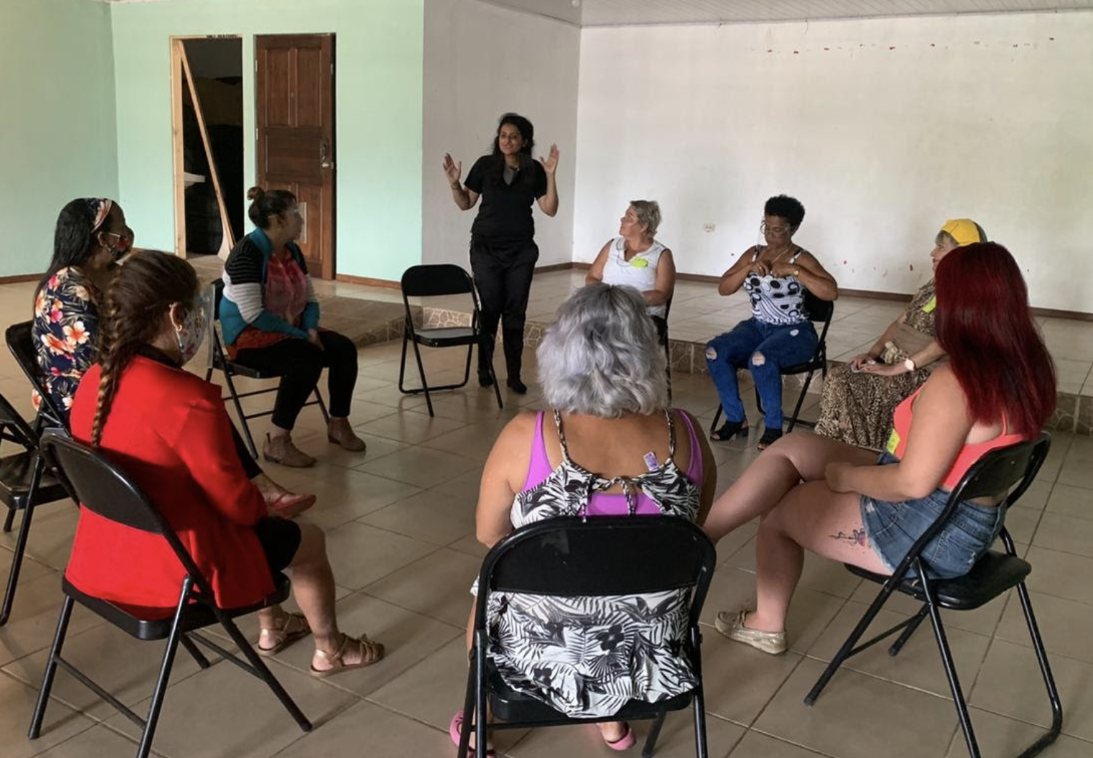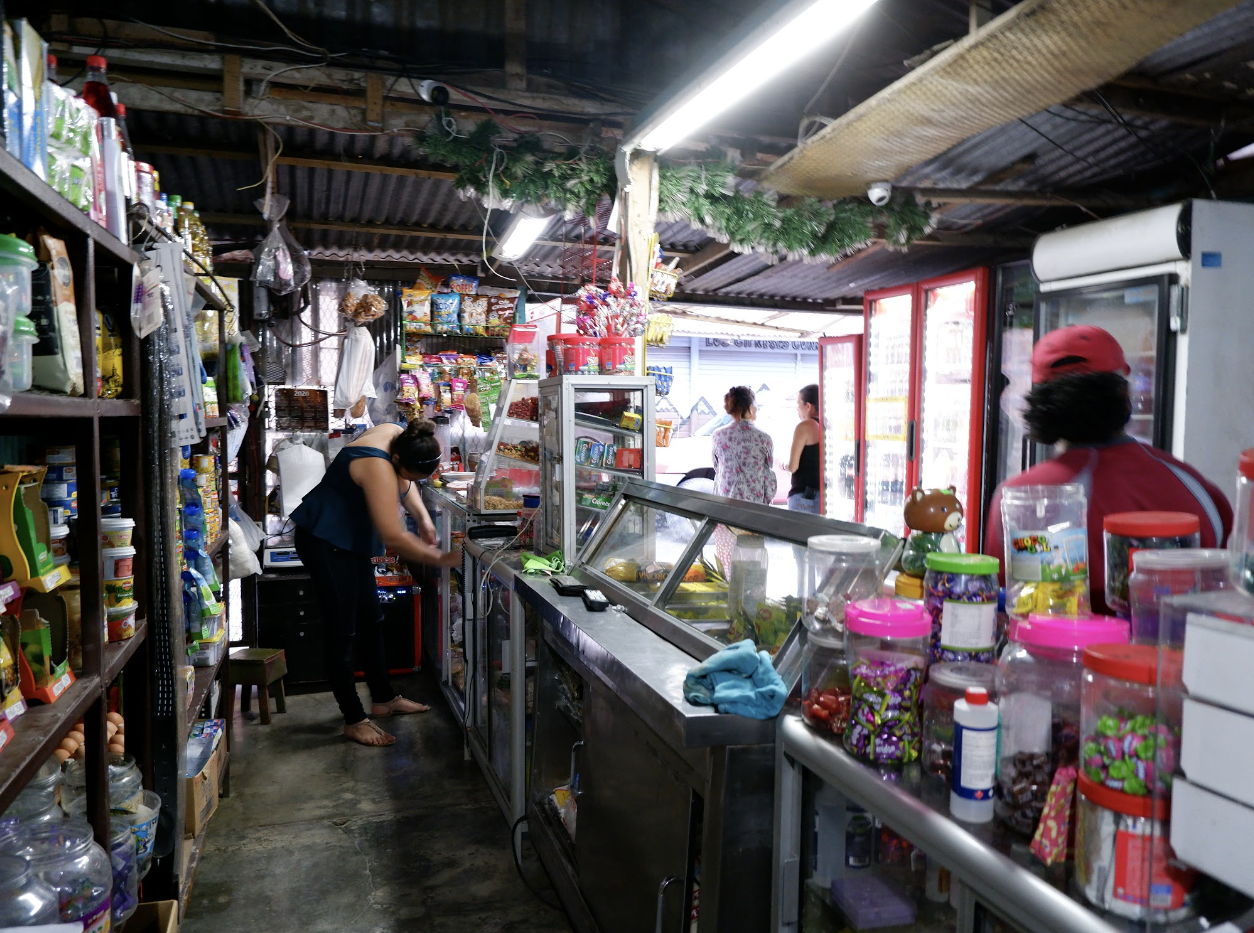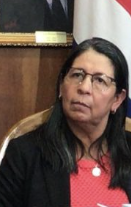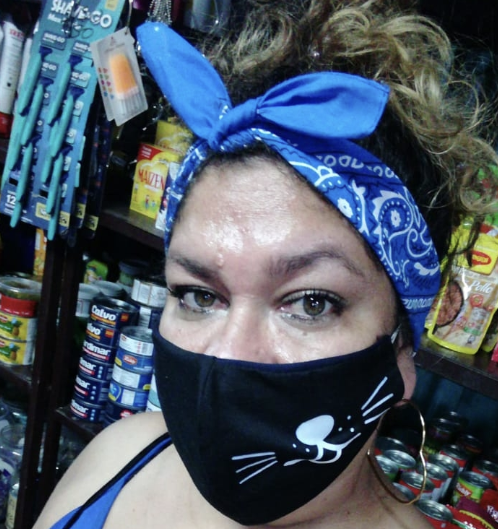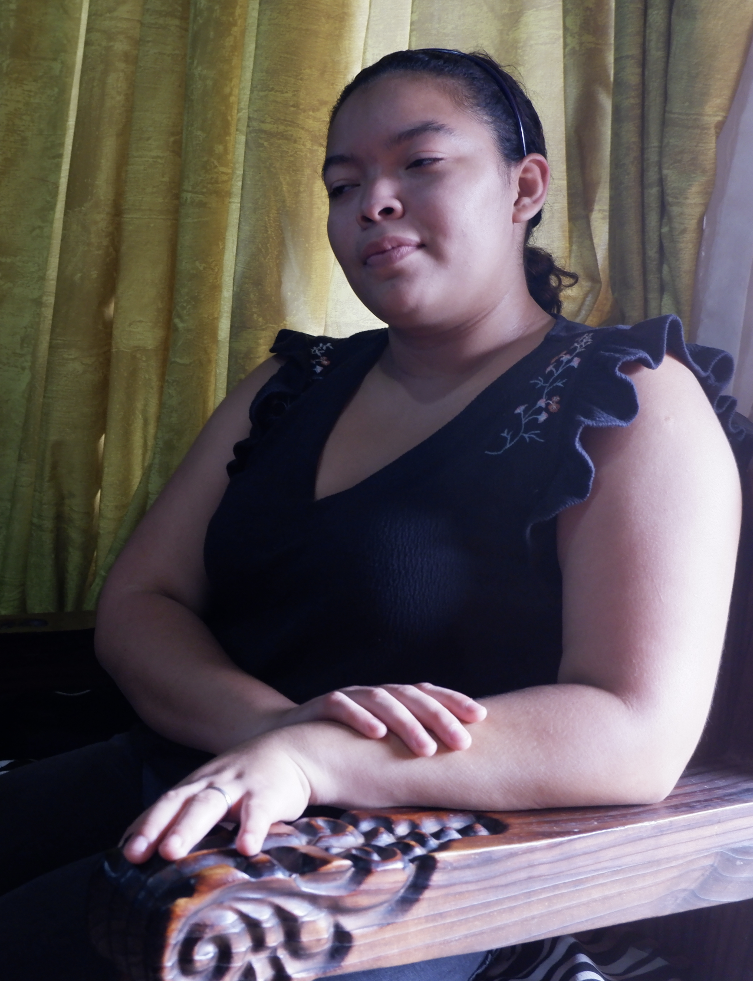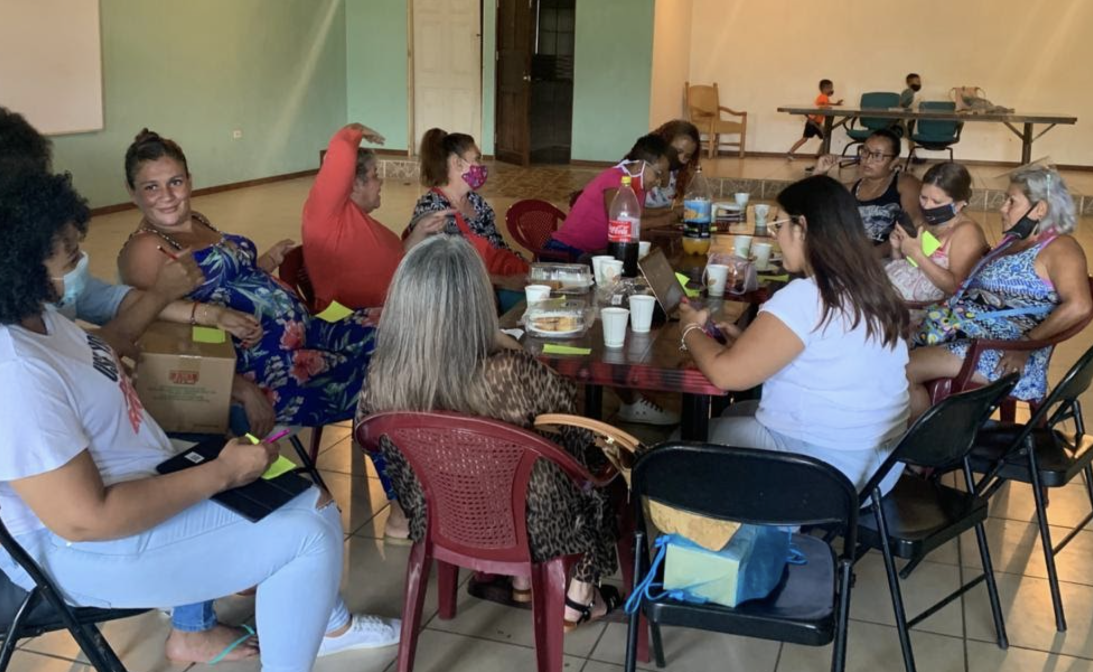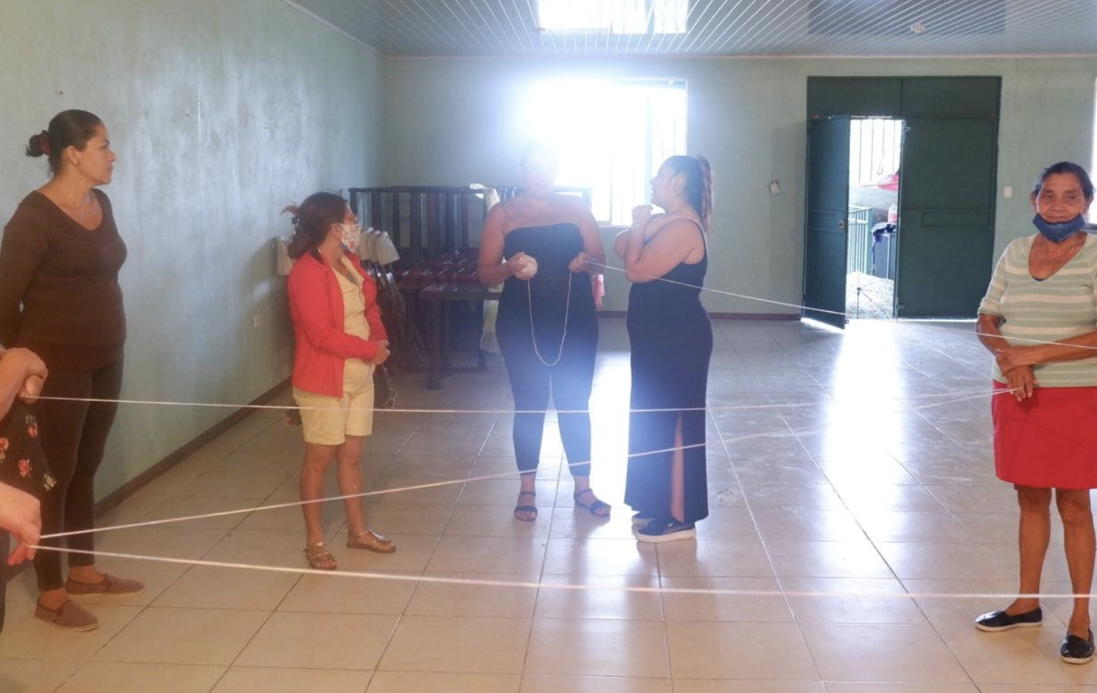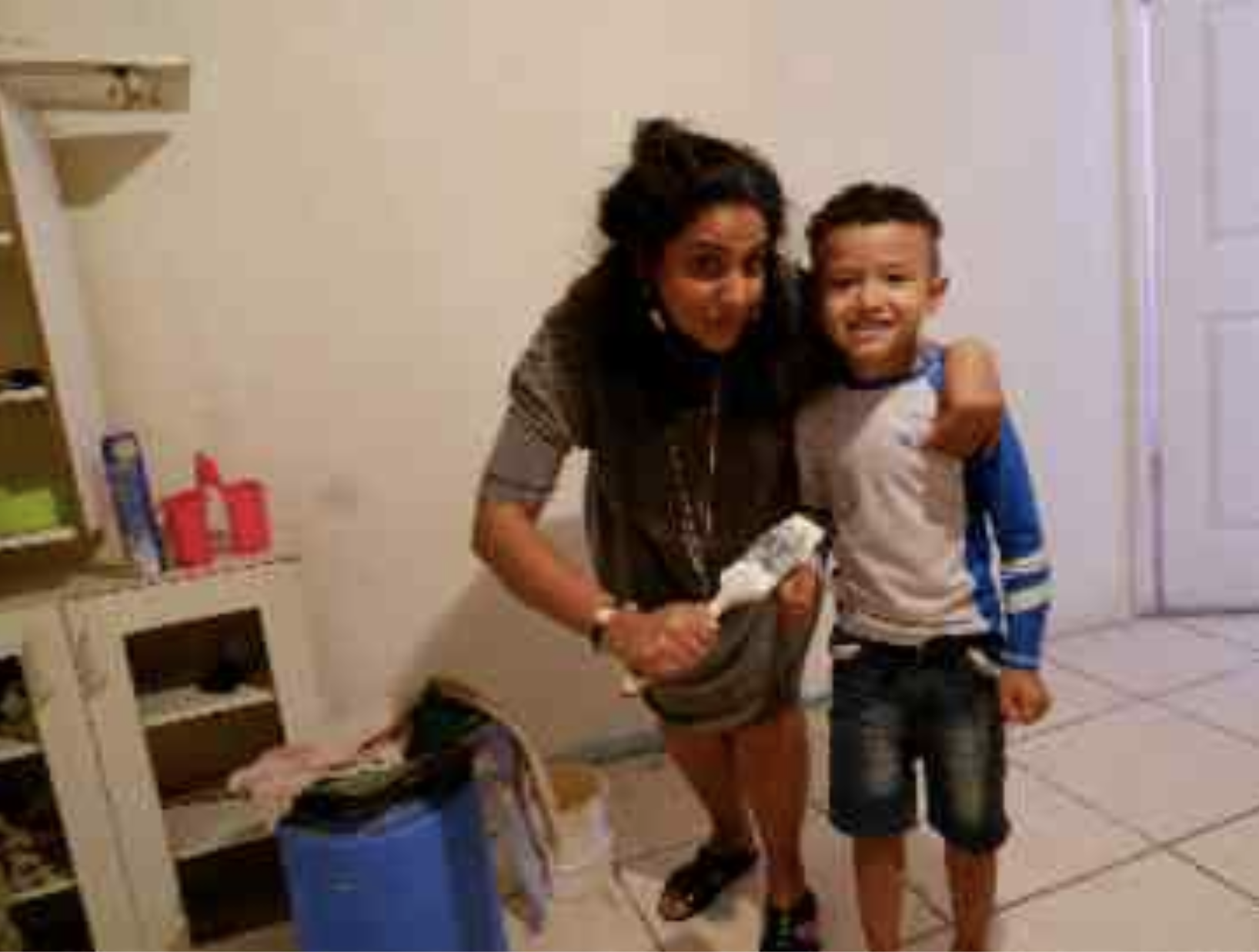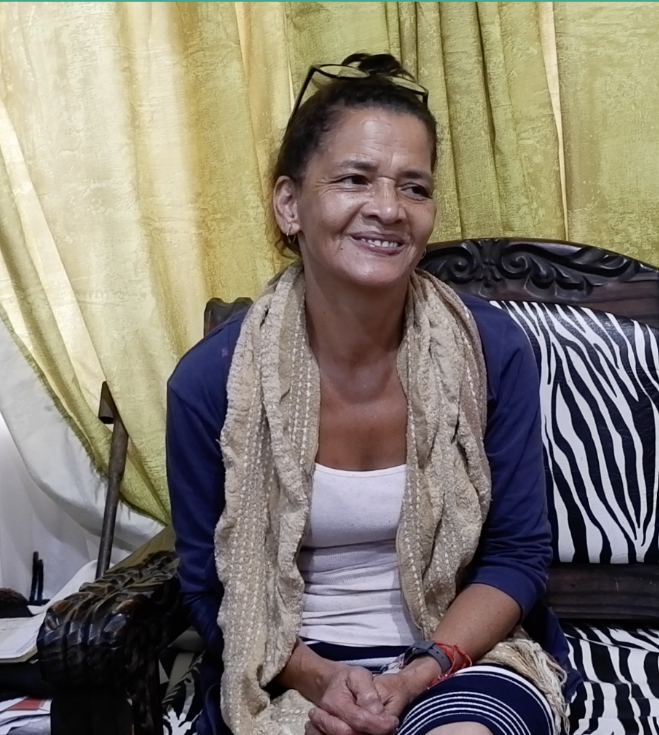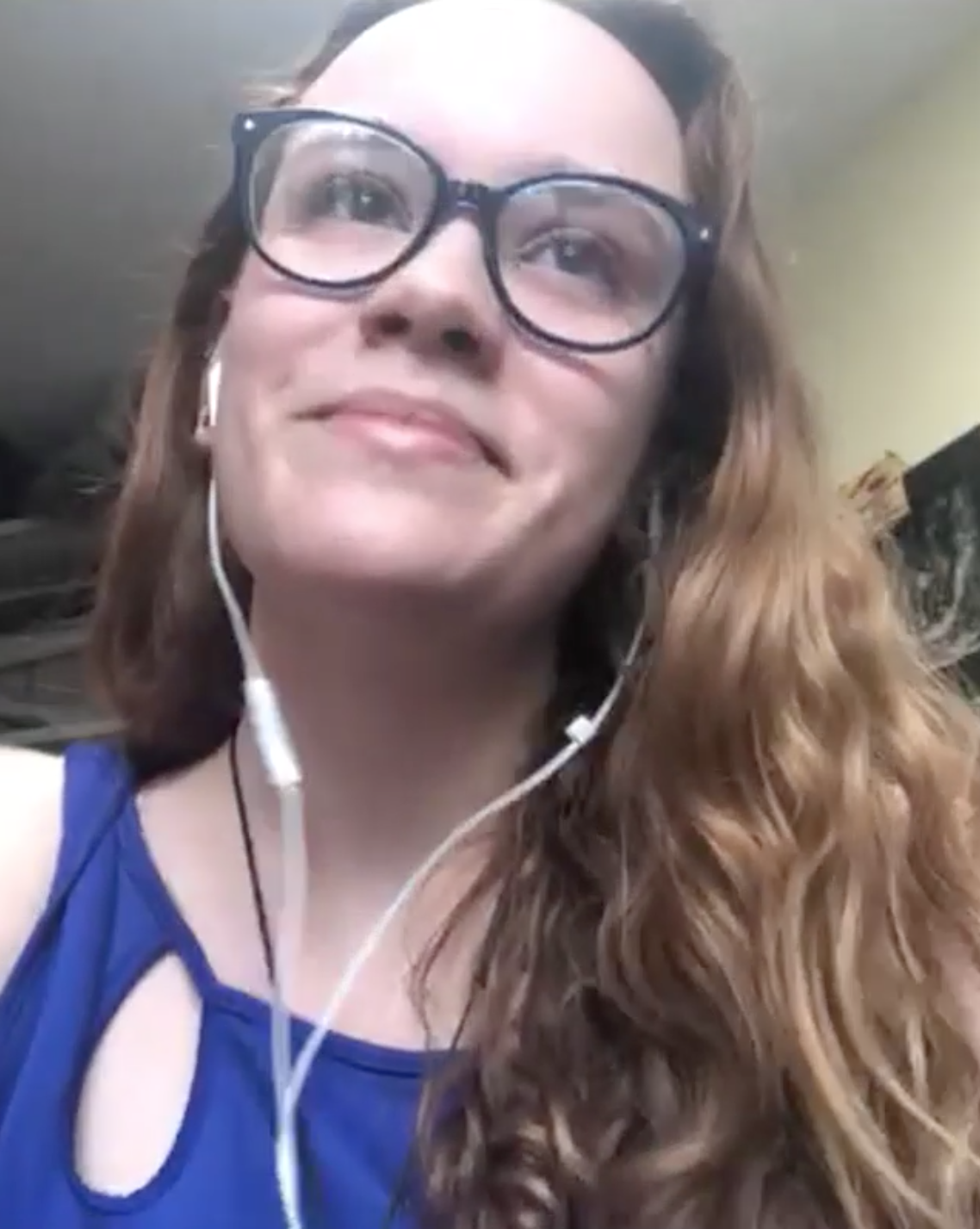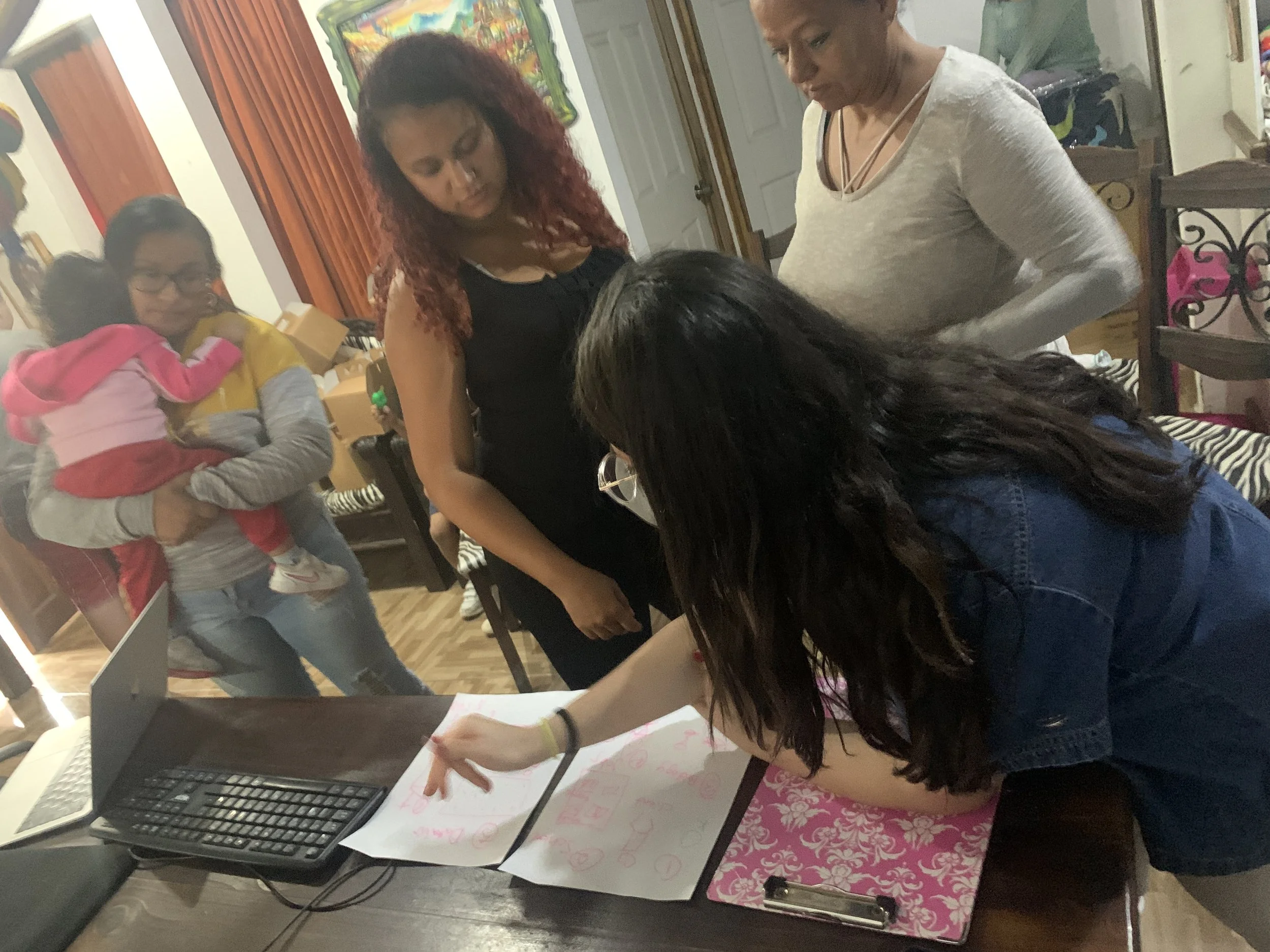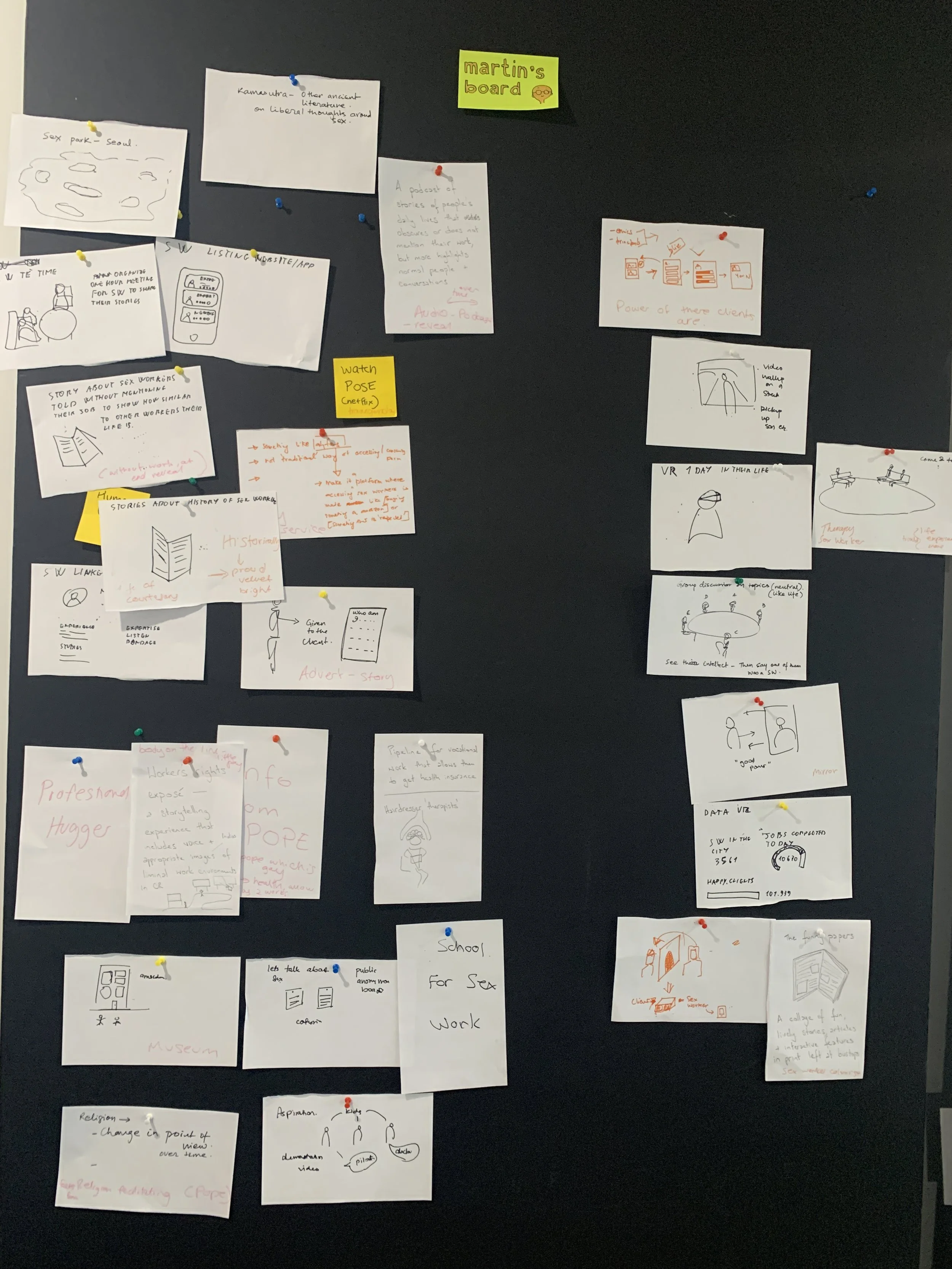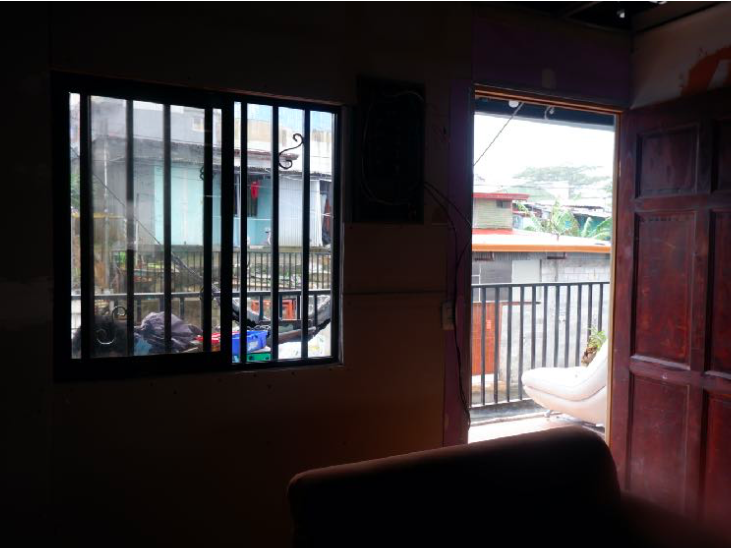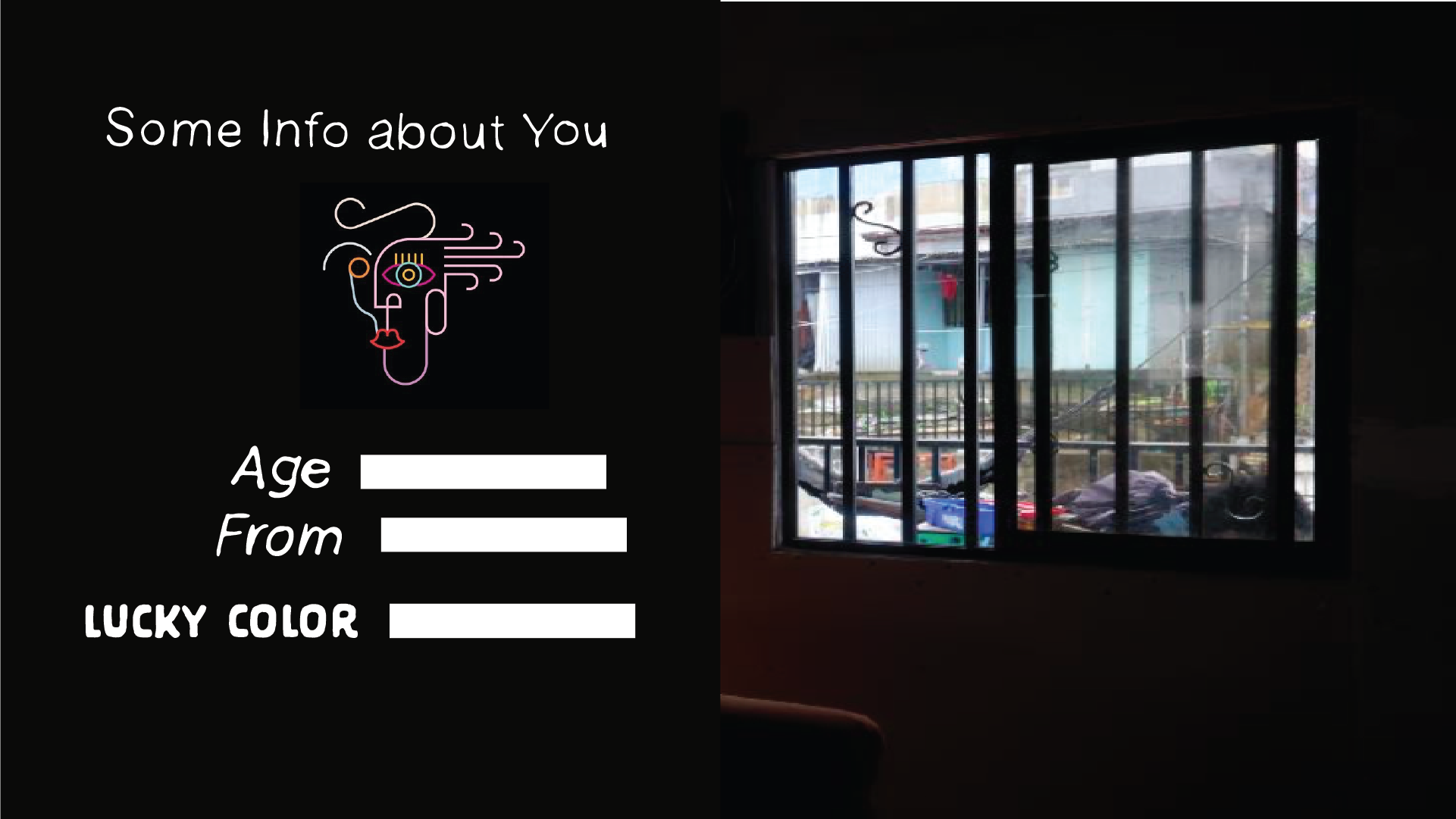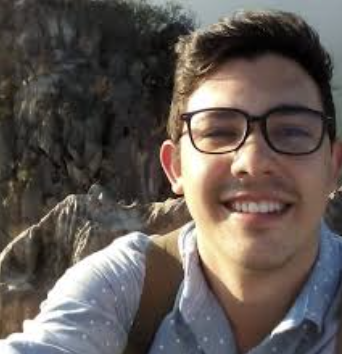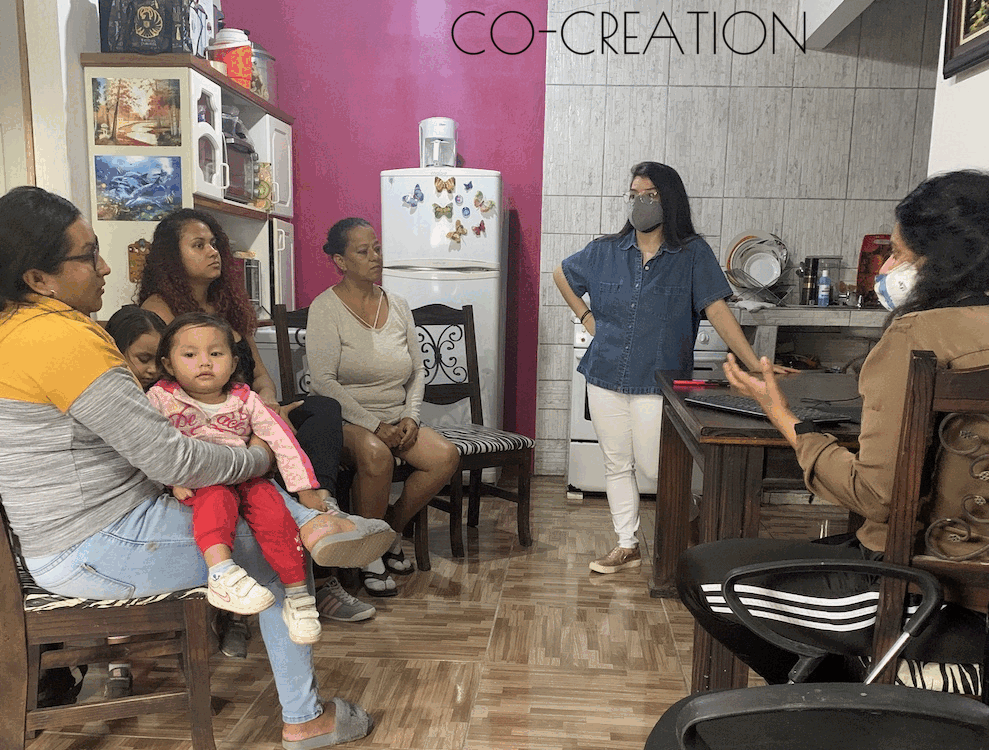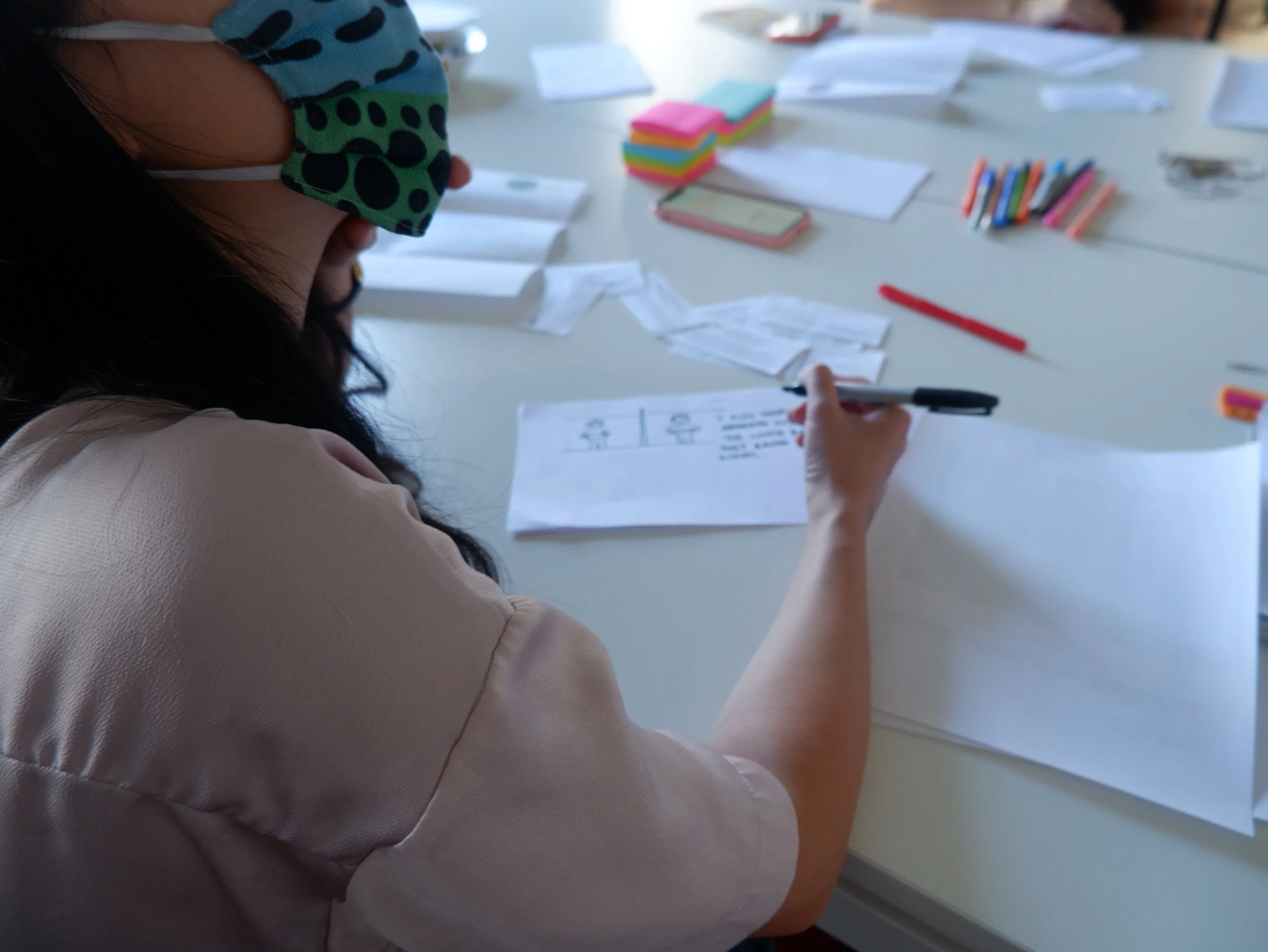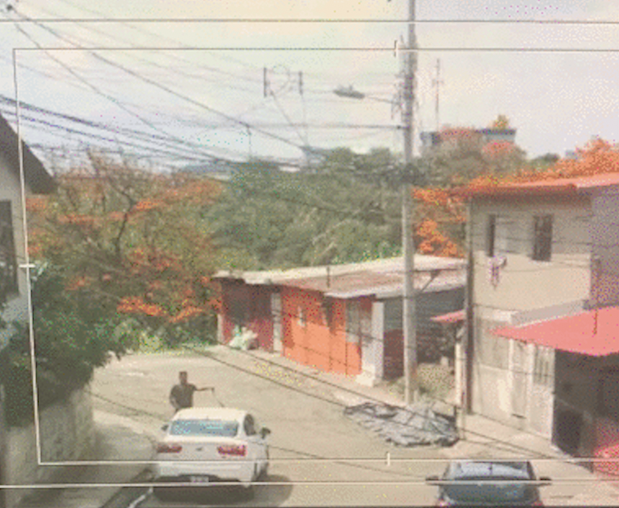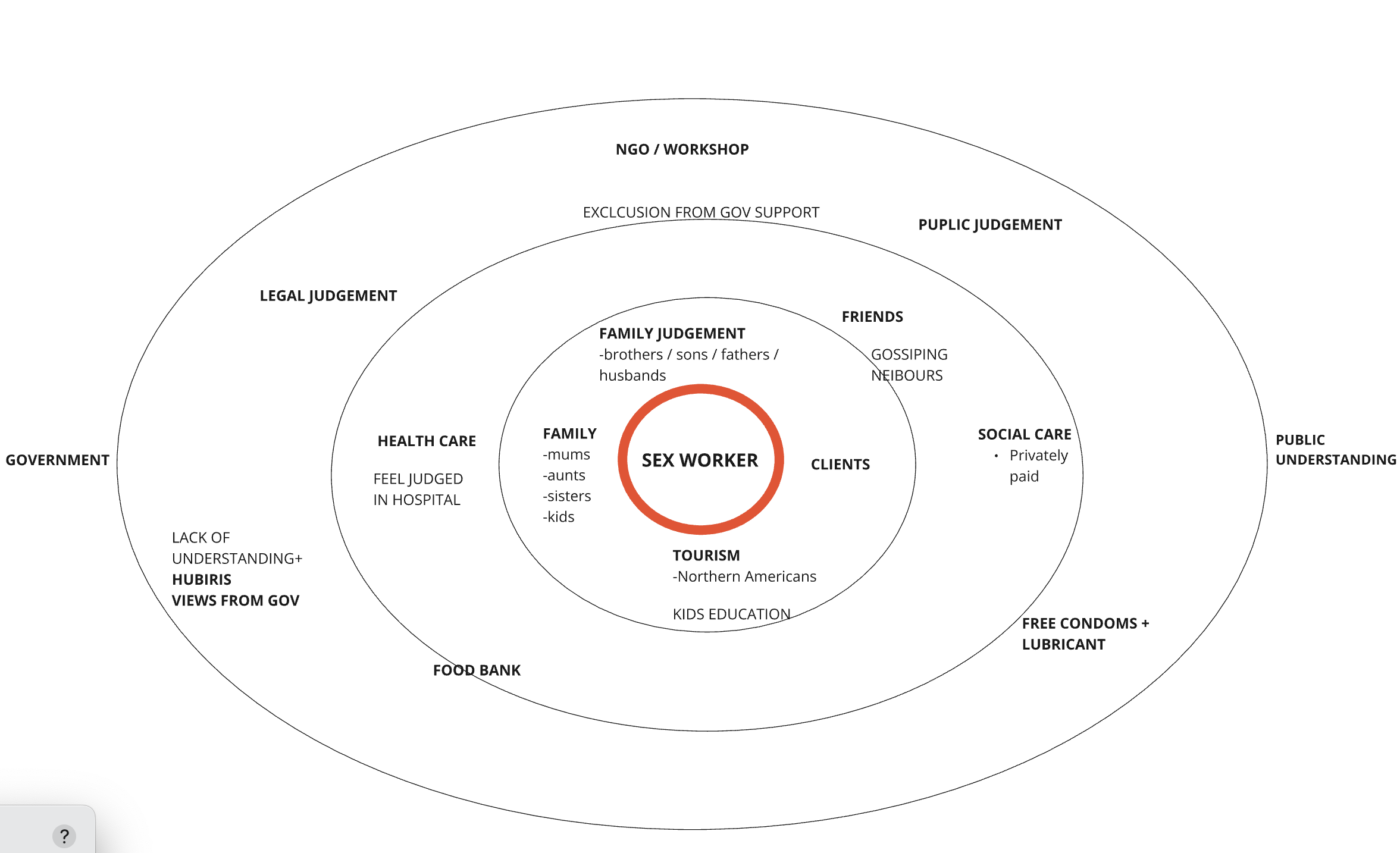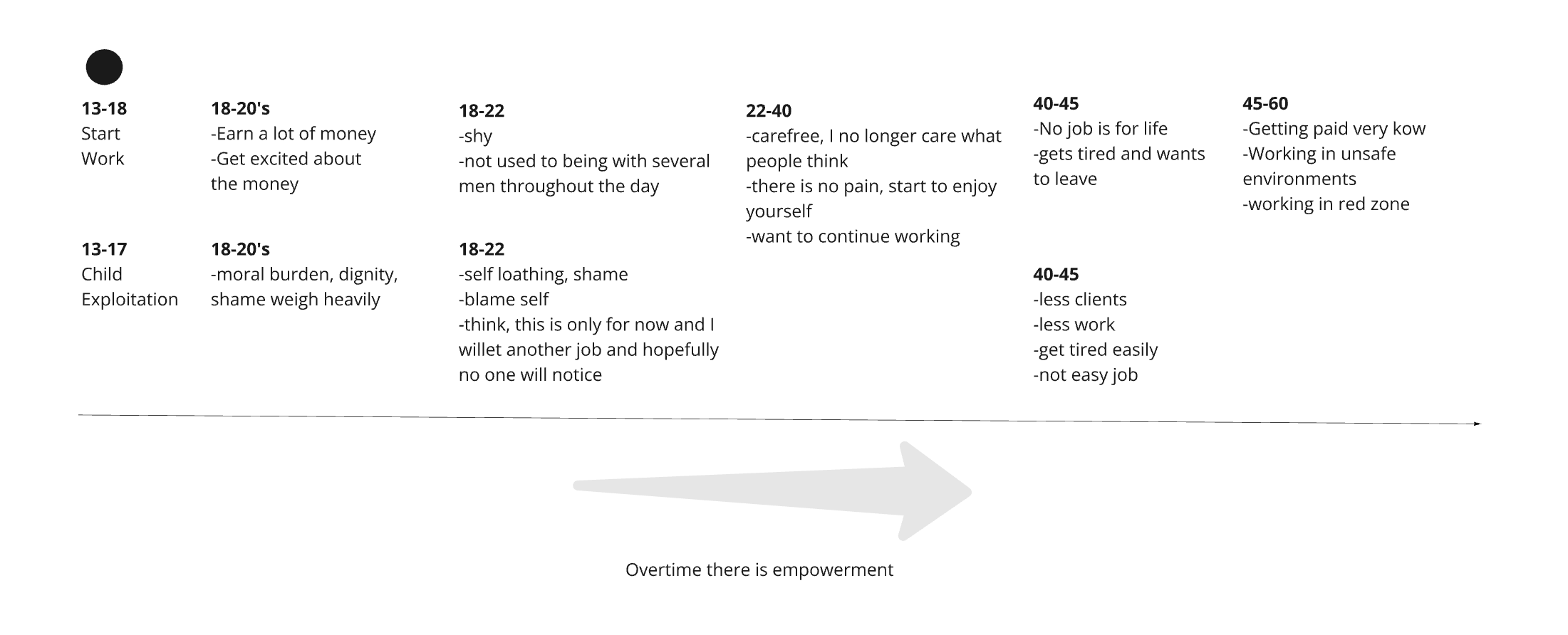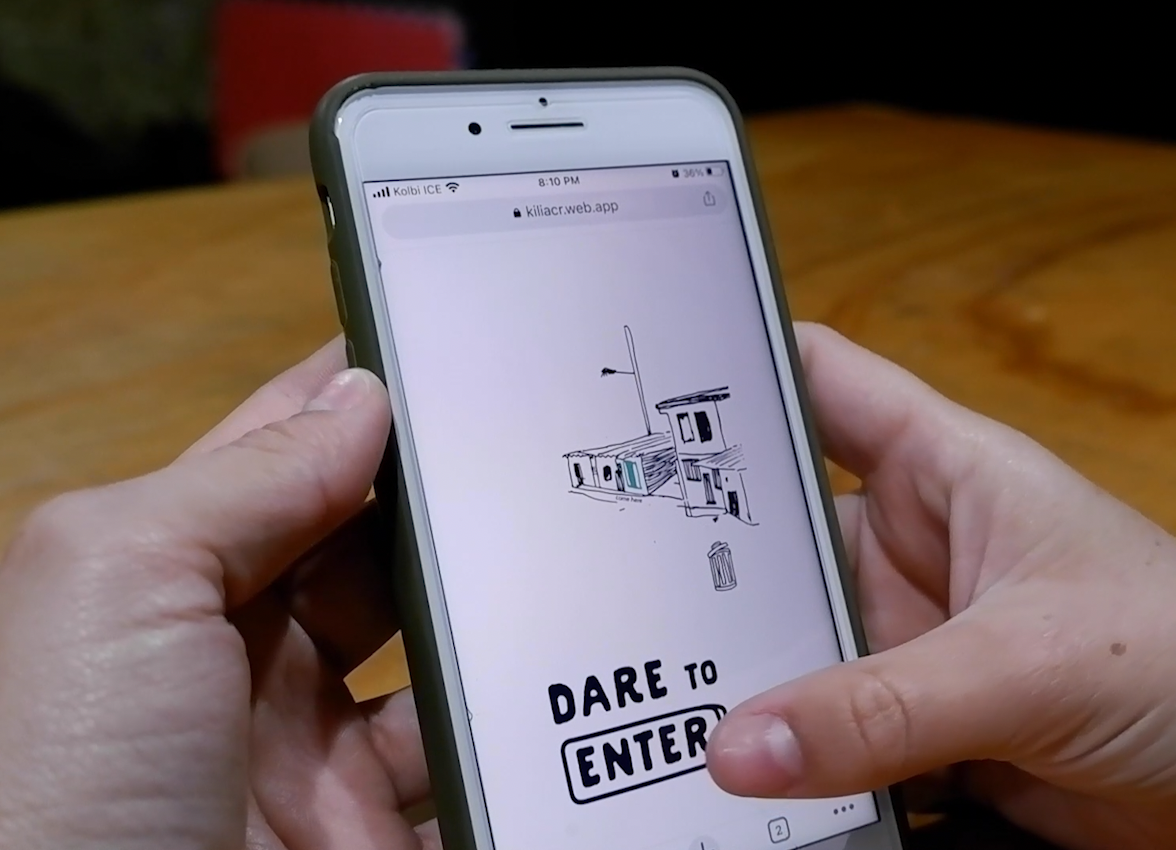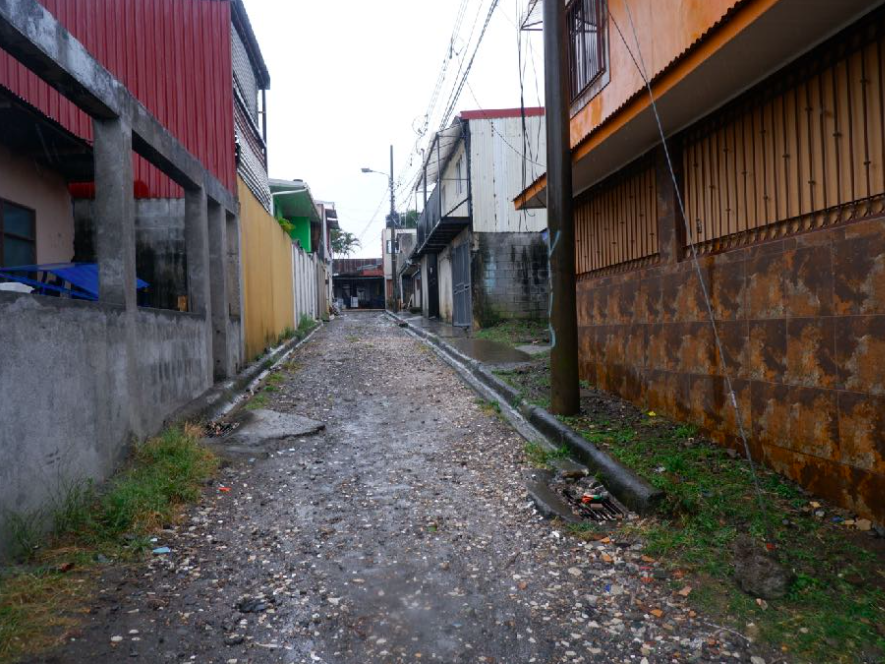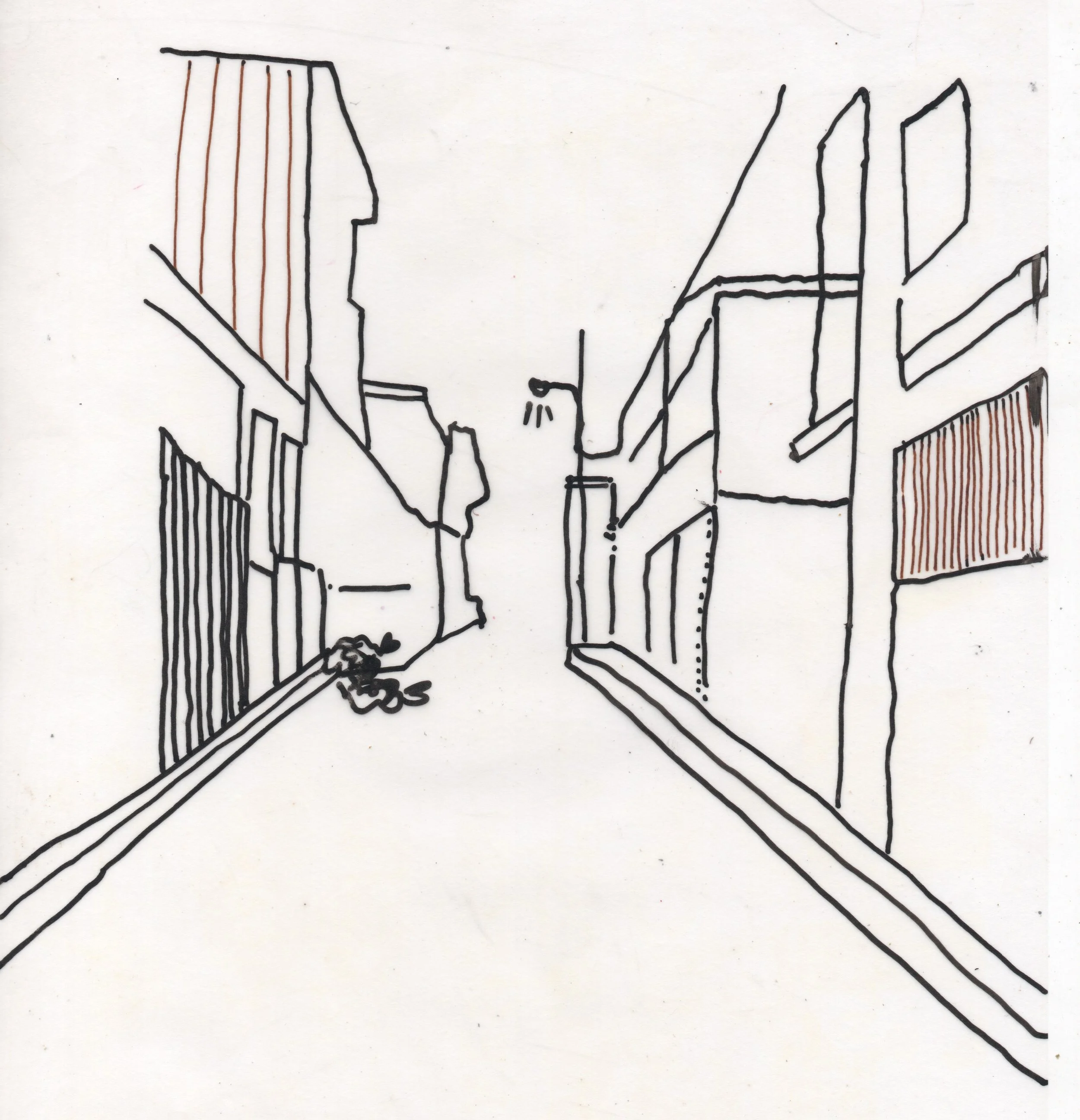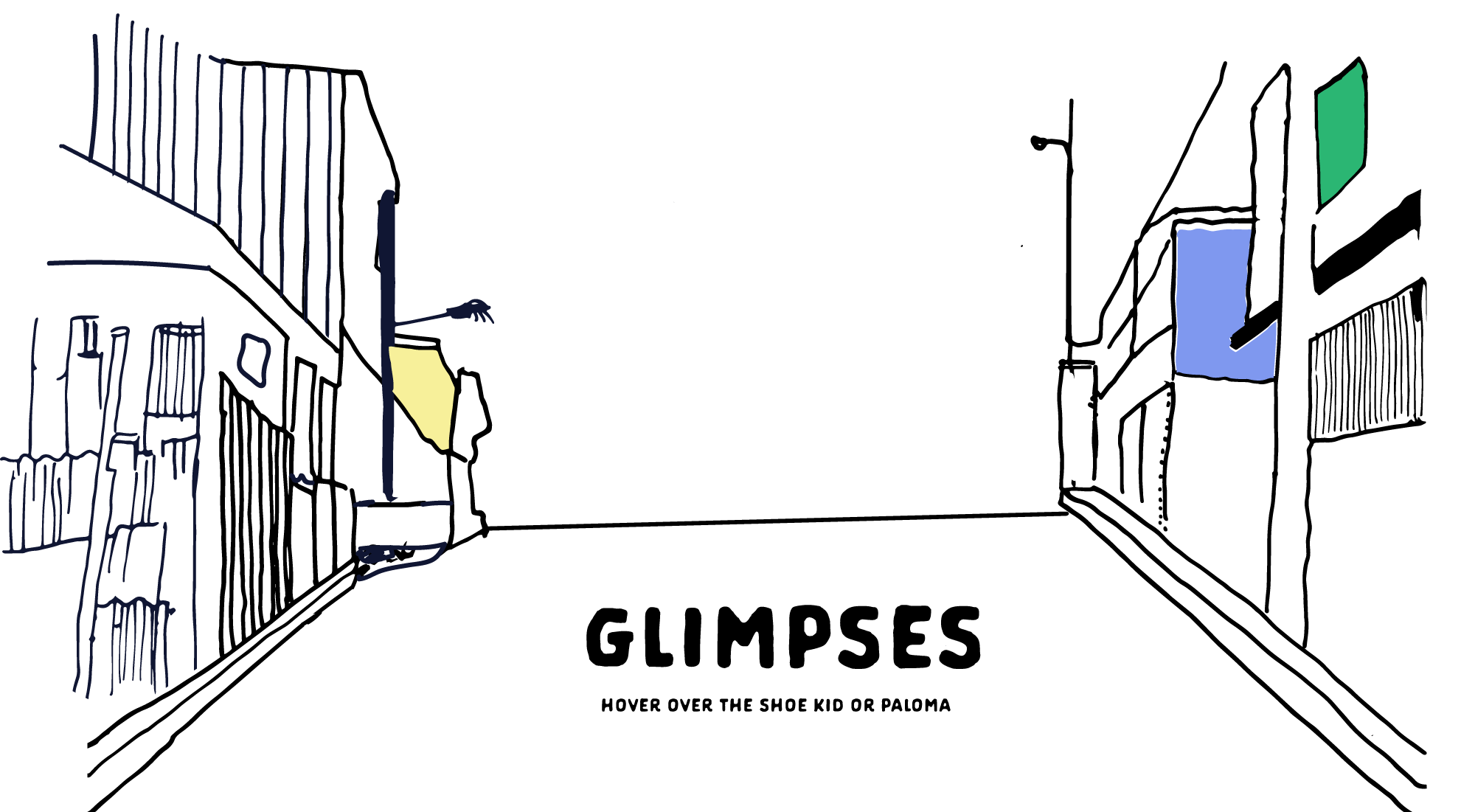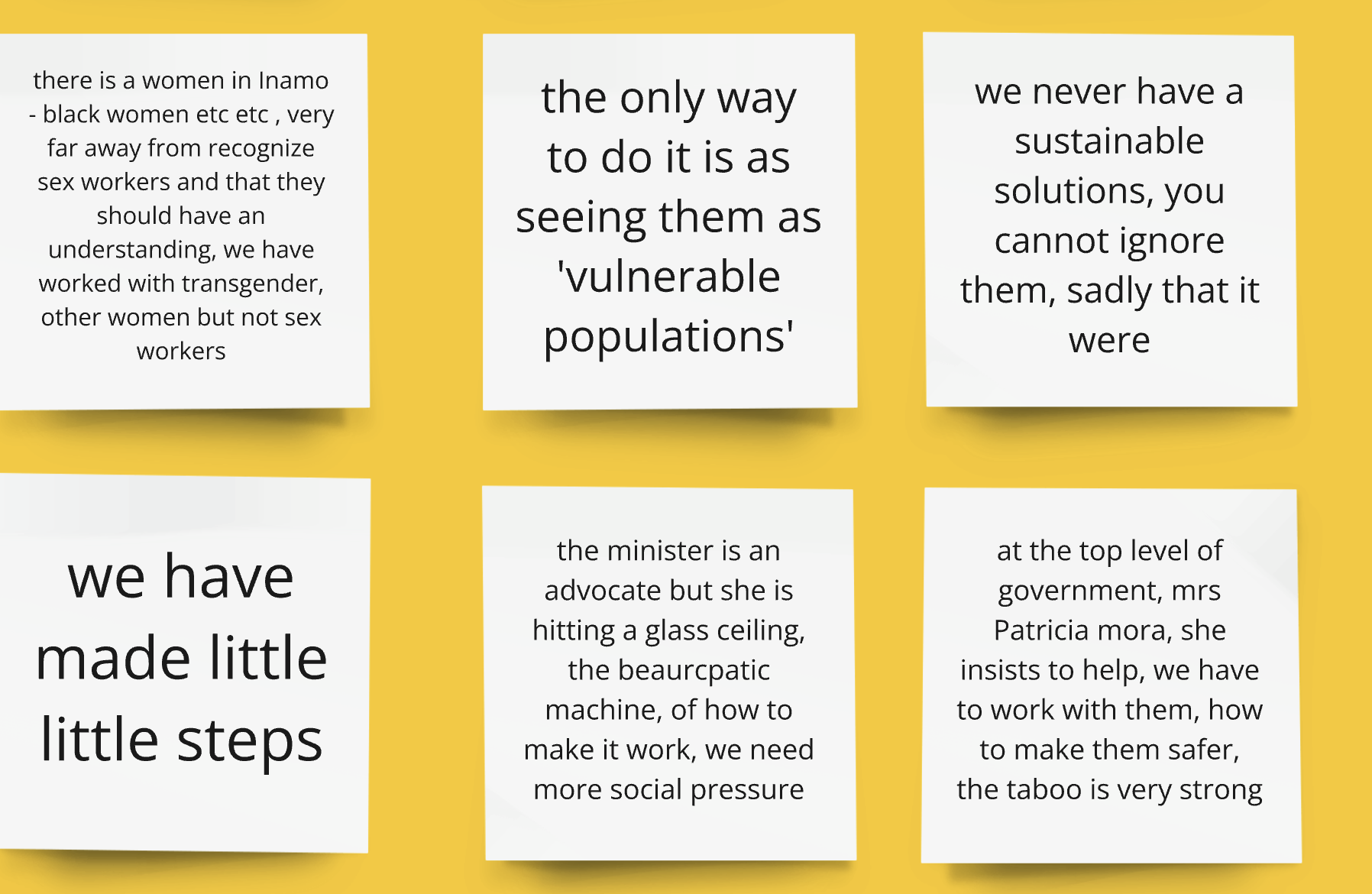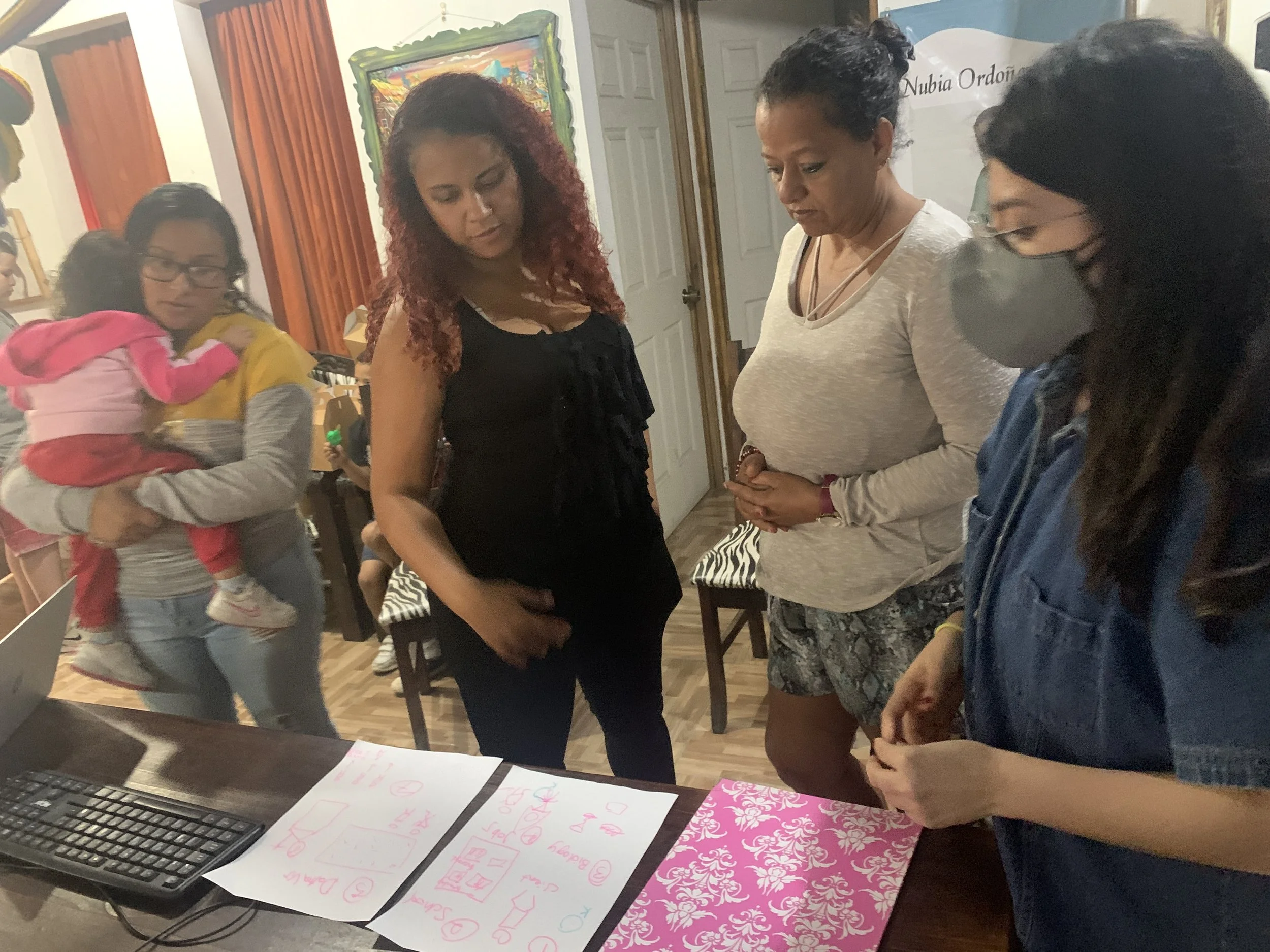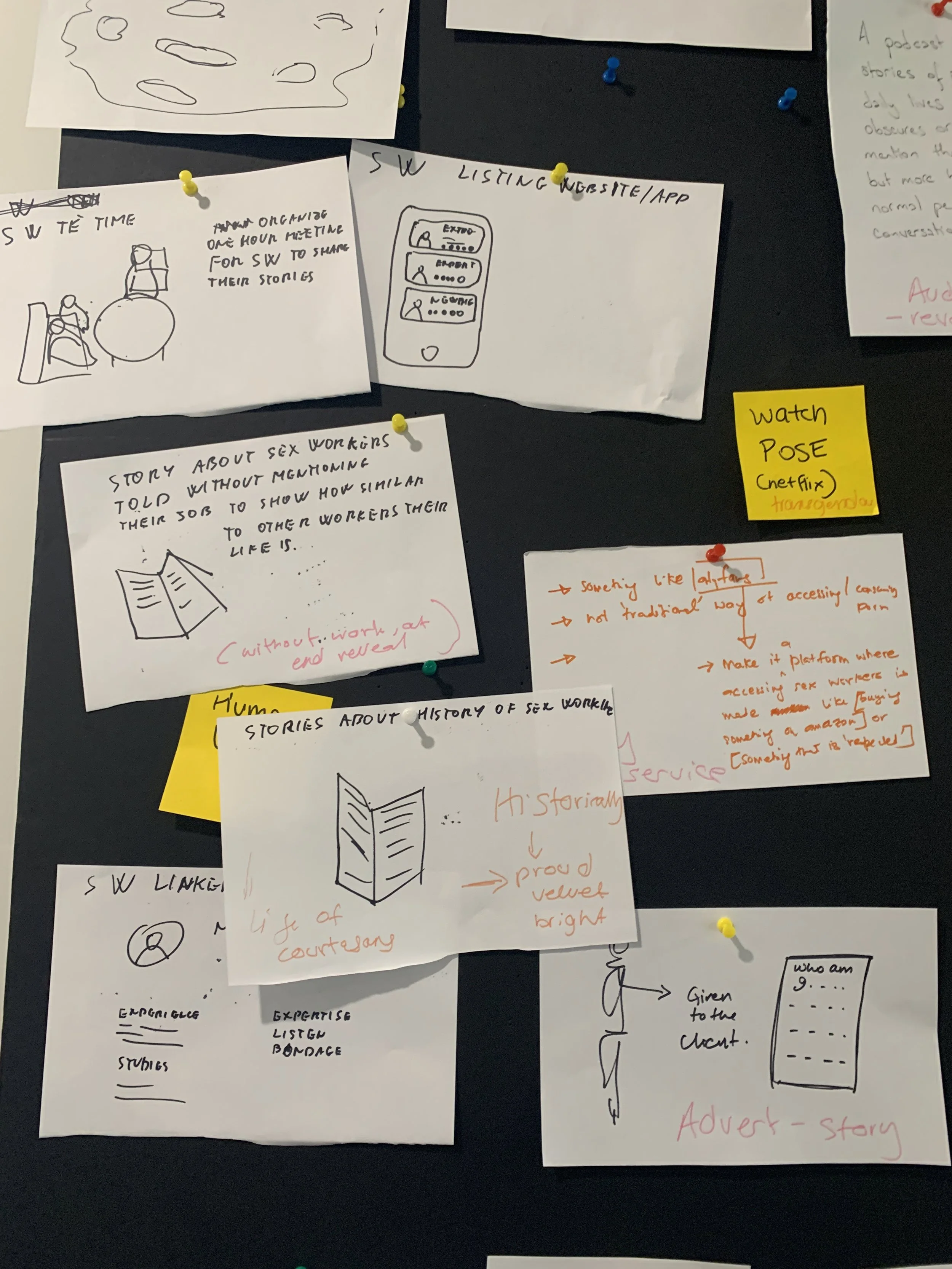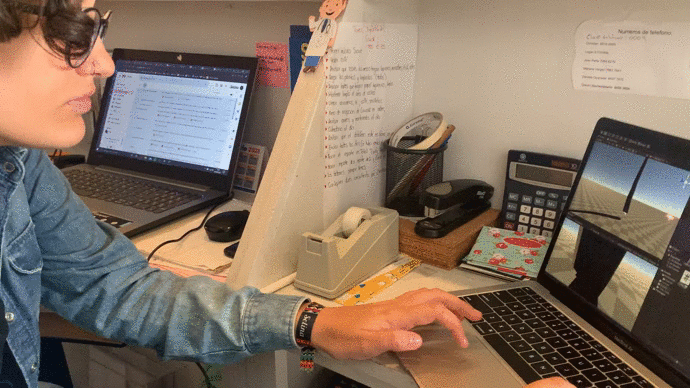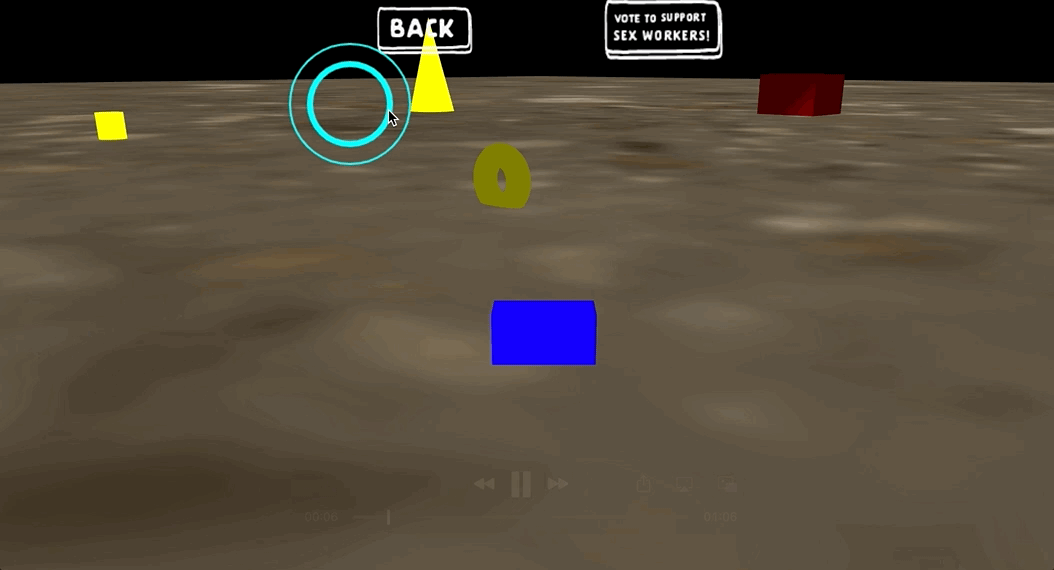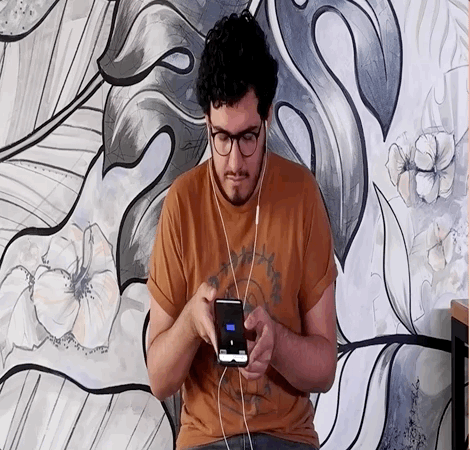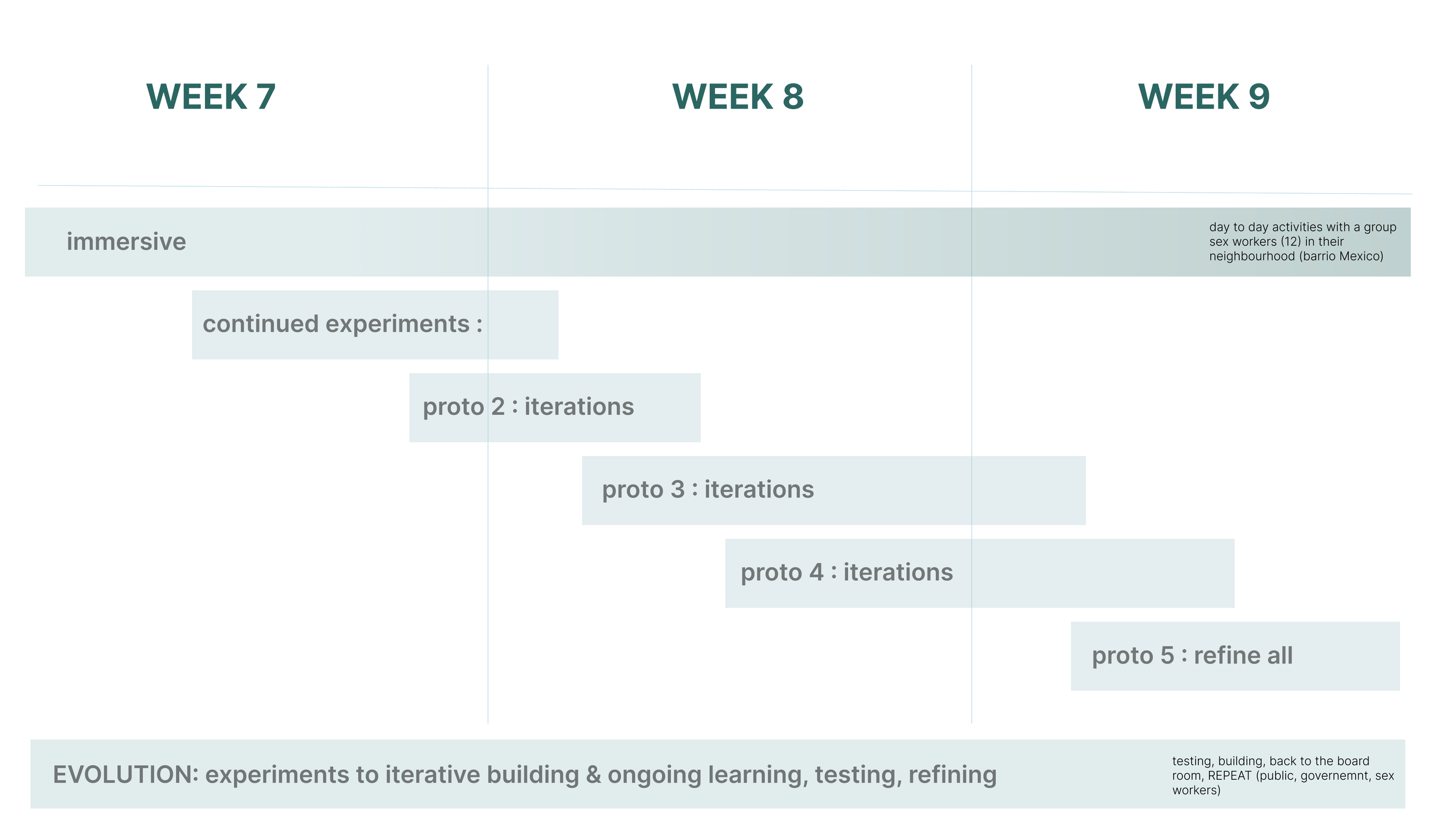RESEARCH PROCESS
some of us rely on an eco-system THAT IS set up FOR US (by THE government), such as health care advice, access to basic education or infRastructure in place to make us feel secure in our society. Whilst being able to research or see what is in place may be simple (if literate - tech + basic literacy, community in place), being able to apply your very specific circumstances shrouded in shame is very difficult. In the absence of this acceptance, how does this basic care become accessible? How can we diminish these bias attitudes so we all have access to basic care? My design process included immersive research, observational research, experiments, online surveys, in-depth interviews, and co-creation workshops with the local sex working community in San Jose. As well as government officials, sexual health medical experts, best selling authors, local journalists and TV personalities who have covered the topic in Costa Rica. Also the close knit community of sex workers (family, clients, neighbours), public at large (attitudes) & the blind community (marginalised, sensory analogue research).
I had to find the people who knew anything about it / had worked with the topic, and this took some serious digging. Most were too scared or cautious to even approach the topic.
So Instead I decided to fully immerse myself with a group of sex workers who had started a group called ‘Le Salle’ - A place to meet, come together. Below is an image of a retired Sex Worker who started the group and agreed for me to carry this study out with them.
I began with attending meetings this group organised and participating slowly in them, but mostly by listening and just following what they did. Trying to understand how they thought, felt, what they desired, their hopes, fears & dreams. The things that were important to them and of course to build trust. Sometimes I would bring snacks and host workshops.
As I spent more time with this group, I realised that they really only had one another as a main source of information on issues such as health and safety, often even going to one another for underground health solutions.
I also noticed how people spoke to them and treated them, the looks they received, the tone of voice used towards them and also their cautiousness when they would venture outside of their immediate community.
When conducting fun group activities, I noticed how freely they laughed and joked around. How open and confident they felt within their group of sex workers, where nothing was wrong to ask about or wonder.
Through interviews and co-creation workshops, I learned that more then accessing basic rights what they really wanted was to be given their dignity back. Their desires of acceptance and fair treatment far outweighed their basic need for safety. They wanted this in an honest and truly accepting manner. A world where you were not judged by your profession but who you were.
I was impressed by the strength in how they overcame daily obstacles as a group despite of unfairly being denied basic access. They would be sole providers for their families, building property (entrepreneurial) on the side (weekends), being present for their community of sex workers, helping with medical issues in the way they knew, learning whatever they needed to get by. There was a beauty in their resilience and relentless hope.
This led me to create something that would allow them to feel heard (their real encounters & stories) for the public to listen to in their own time and pace. I spent several weeks refining the prototypes from lo-fi to hi-fi, testing with the public and sound experts. The design decisions were made based on the public and sex workers feedback, including the stories, element of sound leading to other senses and igniting the imagination, re-creating the physicality, the anonymous nature of the experience (“no one can know we are sex workers”).
Through my research, I also learned that most members of the public do not know much about the reality of sex workers or that they were falling through the system and were denied basic rights.
In order to understand this better, I conducted an online survey where 60 people participated. This further validated my understanding that most people where in the dark about this issue (40% did not know if they had access to social security)
Although most people were split between their stance on sex work, 85% believed they deserved access to social welfare.
This encouraged me to create an engaging way for the public to be able to vote for this, after they had heard their stories that showcased real life scenarios.
KEY INSIGHTS
📍STIGMA
In Costa Rica, Sex Work is a massive taboo, Sex Workers feel like they have to hide their profession not only for their own safety but for the future of their children. Attitudes and shunning can lead to a deeper mental impact. Many are pushed to practice in much more dangerous environments to avoid this stigma.
“You can kill, but not work as a sex worker” - Mydi (sex worker, 20)
“I don't want to be judged, what if my kids get bullied at school” - Katherine (sex worker 33)
⛔️ BASIC RIGHTS DENIED
In Costa Rica, many sex workers face barriers to medical checkups, schemes offering adult courses for free or basic protection by the police - the apparent prejudice is unapologetic and extends to their families. Even in extremely dangerous situations, the police for example would prefer to not believe them or ignore them entirely.
“when I go to the hospital, I lie” (Kimberly 28)
🕳 GOVERNMENT IN THE DARK
For the government, not only do they not want to face issues regarding sex work (1.8 billion in tourist spending a year - 10% of tourism) or sex workers but they do not even know about this group. They feel at a complete loss as how to go about this issue. There is also a lot of glass ceilings to this topic and political agendas.
“we are trying to understand them, we know almost nothing about them, we don't know how to work with them, it is taboo for us”. - INAMU (Institute of Women)
“it is impossible for public institution to understand”.- INAMU
🧏 PUBLICS DESIRES TO KNOW MORE
As there is next to no information about sex workers, this topic is hugely misunderstood or not understood at all. Commonly the younger generation and women in Costa Rica have been seen to want to know more once they realise that this group is majorly ignored and that social implications are devastating.
“I would like to show and share information like this with my family, I think we can all learn together and change our minds”. - Fia, 19
“it's the governments responsibility, Inamu should get more pressure . . . women should be protected” - Fatima 47
✊🏾 PUBLIC PRESSURE NEEDED FOR POLITICAL SUPPORT
Despite this being such a taboo and absolutely not a priority for the government, certain women specific departments admit that the only way to move the needle is to gain public support, or any kind of show that they care.
“if the people demand it then they (government) will respond, for more support, we need more social pressure”. - IMAM
Normally when I begin a research process, I would typically try to access all the information there is out there to understand the topic to the fullest first. However, sex work is such a taboo topic in Costa Rica, that there was really not much out there to research or read up on (desk research). But I did find a book on Sex, tourism and local mobility in Costa Rica, called “Gringo Grinch” by Dr Megan Rivers Moore. I later interviewed her.
In-Depth Expert Interviews
Edgar Silva
Morning tv talk show host
Interviewed a sex worker on his show and was shunned for it
Alejhandra
Vice Minister of Health
Previously a nurse
Lidia Flores, 41
Works in a shop
Tenant of a sex worker
Chino, 41
Security guard
Maria, 21
Student of Political Science
Maydi
Nubia (retired sex worker) shows me an article with anger over being called Prostitutes & not Sex Workers
Dr. Megan Rivers-Moore
Author of Gringo Gulch (sex, tourism & social mobility in Costa Rica)
PHD Women & Gender Studies
This is the heart of the neighbourhood. I would often sit and observe here.
Helping Katherine (sex worker) with building her house every Sunday
Alejhandro Vergas
Journalist, works in media communication, television
worked in policy making, UNICEF and other NGO's
Dora Maria Sequeira Picado
Director of Parque la Libertad (education for underprivileged communities)
Darling, 65
Domestic worker
Mother of a sex worker
Lucia, 19
1st year student for respiratory therapy studies
Jackaline
Physical Interactive Object Journey | low fi prototype | story in letter by sex worker - kit delivered to you
“How will I get the kit? Do I have to pay for it?
Prototype & User Test
Childlike Design
I used a heart sensor and connected it to some LED lights and haptic modules. Members of the public who would answer questions about how they felt about Sex Work would wear it as answering questions.If their heart rate exceeded a certain level the lights would start to flash and the haptics would be set off.Life Cycle Mapping
Life Cycle Mapping
To understand my focus group better, I decided to build a life cycle map from all the 1:1 in depth interviews. It was becoming clear that there was a pattern in their journeys and I wanted to capture this. It made me understand that this awareness was important for the younger workers.
CO-CREATION
I had a local translator on site from the start of my immersion, especially for groups. Having the consistency of the same translator established trust and I was able to understand deeper Costa Rican cultural connotations.
I had many ideation sessions with my cohort, and had developed many possible outcomes from the insights. But I realised what truly mattered was what the women thought about it. Did it represent them? And what they really cared about? What did they want? How did they feel about it?
Fatima, 47
Stay at home mum
Antonio Trejos
Inamu Operations Manager (Institute of Women)
Eco-System Mapping
Asked to enter “favourite colour” not name. (remain Anonymous)
Some Initial Experiments
The taboo nature of the topic meant that this was a good way to break the ice and laugh a little.People realised that they felt awkward about talking about this topic and in turn it allowed us to confront it in a more candid manner.Eco-System Statement
Surveys Results
Renier, 34
Uber eats motor cycle delivery guy
Husband of a sex worker
Carlo, 62
Works in tourism transport
Lucia, 20
Studies special needs education
In-Depth Sex Workers Interviews
As I was conducting so many interviews with so many different stakeholders, I decided to draw up an eco-system map to understand the clear connection between between them all, who directly has an impact on sex workers and what are the links to be made to work towards different possible solutions.
This statement was taken by written out after careful consideration from the eco-system mapping.
3. PROTOTYPING THE SONIC EXPERIENCE
Childlike Design
Over the course of a month, I built several prototypes from low-fi to mid-fi, tested my hypotheses, and reflected the perspectives of public, institutions/governments and sex workers.
I knew I needed to take the users into a journey of entering this new world of a sex workers reality. So I took images from their real neighbourhood and drew them out as the interface of the journey.
My initial focus was, how can I digitally build a world that acts as the perfect anonymous journey into the neighbourhood. Below are 3 versions from low fi using physical objects to mid fi on p5 and finally hi fi on unity & 3js.
I have carried out three main prototyping phases for 3 points of the experience they are 1. The Journey into the neighbourhood 2. The Voting 3. Experiencing the stories on a 3D audio space.
PROTOTYPING THE JOURNEY:
Nubia & Katherine
In-Depth Community Interviews
Kimberly
Adriana
I found out in these co-creation sessions where I shared my ideas to the sex workers, that of course it would be good for their group to be on the map, have a creatively speculative experience that would get the support that they so badly needed. But really they wanted their stories heard. For people to really know what they go through day by day. The judgement, the lack of acceptance.
This greatly influenced and changed my design, where the focus pivoted to the stories of the women. And how people would get to experience them. As it was COVID, I decide to move from a physical experience to a digital one. Yet wanting to maintain the physicality via peoples imagination that could be unleashed by sonic design.
During participatory sessions, I got the group to draw out their dreams and hopes, we saw a pattern in that they always mentioned their children, even if they were older sex workers (65).
Therefore, some of the stories on the web/app clearly portrays their consideration of their children and how they are always thinking of them.
The design of the entire experience as you journey through is also very childlike and anonymous. As remaining unknown was key to them. The childlike drawing was also done in an attempt to get people in a more explorative and non judgemental state of mind. Like a child learning new information with openness and zero prejudice.
In-Depth Public Interviews
Digital Interactive Journey | mid fi prototype | Welcome into neighbourhood
‘It’s a bit unclear, too much happening, not enough instructions’
Digital Interactive Journey | hi fi prototype | Moving in 3D environment
‘Much better feeling, but I don’t associate much with the objects in the sound space’
2. PROTOTYPING THE VOTING:
In reality, it also allowed people to somewhat understand how truly uncomfortable they felt discussing the topic.Physical Interactive Voting | low fi prototype | multiplayer RFID 4 token voting | The more people vote for a topic, the brighter the light gets for that vote, each vote has it’s own colour
“I really like the voting, it’s fun”
Digital Interactive Voting | mid fi prototype | different colours representing different votes
“This is a bit crazy - I don’t get it. It’s like brains are flying”
Digital Interactive Voting | hi fi prototype | colour concept changed to colour tone for data and change of infomatic layout to accomadate changes
“I can’t believe people don’t think healthcare is that important”
2D recorded audio | low fi prototype | alberton audio editing platform
“it is quite flat, like a normal recording, but also a lot of intense content”
Audios placed in 3D objects in gaming engine(Unity) | mid fi prototype | Unity, world cretion
“Exploring like this is fun, I wanna hear more!”
Audios experience in 3js | high fi prototype | De-fault 3D proximity effect to audio, gesture movement integrated, available on some phones (specific version of phones)
“‘It’s a bit fast”
‘It’s a bit slow
‘English is not clear”

